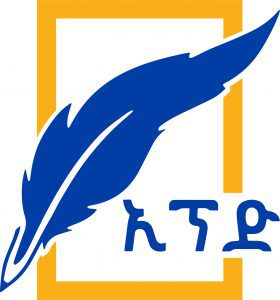
Ethiopia stands at a critical juncture in its history. As one of the world’s oldest civilizations, Ethiopia has been a symbol of resilience, diversity, and pride. However, as we look forward to a future of peace and prosperity, one undeniable truth remains: Ethiopia lacks a unified national narration. A shared national story is vital for a nation to thrive, for it binds citizens together, nurtures national pride, and ensures collective progress. Today, we face a pressing challenge: Who tells Ethiopia’s story? And how can we craft a narrative that resonates with every Ethiopian, from the highlands to the lowlands?
The narration we inherited: A legacy of division
Historically, Ethiopia’s national story has been told from a select few perspectives, primarily that of one side. The glories of Axum, the resistance at Adwa, and the reigns of Emperor Menelik II, Emperor Haile Selassie, and King Tewodros I have been the dominant chapters of our national story. However, this focus has left little room for the histories of the Oromo, Somali, Sidama, Afar, and other communities, all of whom have contributed to the rich fabric of Ethiopian life. This story did not take into account the masses of the Amhara and Tigray people.
For centuries, these groups were largely marginalized in national narratives. Their struggles, cultures, and contributions have often been relegated to the margins, creating a sense of alienation and disenfranchisement. This historical imbalance continues to haunt us, as it has sown the seeds of division and ethnic-based politics.
The limitations of our current narration: A house divided
The federal system introduced in 1991 was a response to Ethiopia’s diverse ethnic makeup. It granted ethnic-based autonomy, a move that was intended to give all groups a voice. However, the outcome has often been a fragmented national story, with various groups increasingly seeing themselves through the lens of their ethnic identity, rather than as part of a unified Ethiopian people.
This shift has given rise to ethnic-based politics, which has in many cases outweighed national loyalty. The Ethiopian education system, media, and political institutions continue to reflect these divisions, focusing primarily on the grievances and histories of specific ethnic groups rather than fostering a shared vision for the future.
In short, Ethiopia’s current narration is a patchwork of competing stories, and while these stories are significant, they do not unite us. Instead, they deepen our divisions, making it more difficult for Ethiopians to envision a common future.
Toward a new national narration: Unifying Ethiopia’s diversity
It is time for Ethiopia to create a new, inclusive national narration—one that reflects the full diversity of its people. The narrative we craft must recognize the shared struggles, values, and dreams that unite us, while also honoring the distinct identities that make Ethiopia unique. This new story must be one where all Ethiopians—whether from the highlands or the lowlands, urban or rural, Christian, Muslim, or indigenous faiths—can see themselves reflected.
We cannot ignore the pain and trauma that certain groups have experienced in our past, but we must also acknowledge their resilience, contribution, and aspiration for a better future. The stories of the Oromo, Tigray, Sidama, Somali, Afar, and others must be woven into the national fabric, just as the historical pride of Axum and the victories of Adwa have been.
Moreover, this new narrative must reflect not just our history, but also our shared vision for the future. It must emphasize values like peace, justice, freedom, and prosperity—values that every Ethiopian, regardless of background, can rally behind.
The road ahead: Building the new Ethiopian story
Building a new national narration is not a task for a few individuals or political elites. It requires the active participation of all Ethiopians. Intellectuals, artists, community leaders, youth, and elders alike must come together to shape this story.
The role of education is paramount. Our school curriculum must teach not just the history of one side, but also the histories of Ethiopia’s diverse peoples. It must emphasize unity through diversity and teach the next generation to see themselves as part of a shared Ethiopian identity.
The media must play a transformative role. Journalists, broadcasters, and content creators have the power to influence public perception and can help shift the narrative toward one of unity and collective progress. They must be responsible in representing all Ethiopian communities, ensuring that every voice is heard and every story is told.
Artists and cultural leaders can also play a significant role in this process. Through literature, music, theater, and visual arts, they can weave together the various strands of Ethiopian identity, showing the beauty of our diversity while promoting a shared commitment to the nation.
Finally, political leaders must be bold in championing this inclusive vision. They must set aside ethnic loyalties and prioritize the common good of Ethiopia. This means promoting reconciliation, healing, and nation-building over division and partisanship.
Conclusion: A call to action
As we look to the future, Ethiopia’s most significant challenge is to craft a narration of unity—a story that transcends ethnic and regional divisions. The new national narration must not erase our differences but celebrate them within the context of a shared Ethiopian identity.
This work will not be easy, and it will require effort, commitment, and sacrifice from every Ethiopian. But the rewards are immense: a united Ethiopia, where every citizen feels that their history, their identity, and their dreams are part of the national story.
Let us begin this work today. Ethiopia’s future depends on the narration we create now—one that is rooted in our shared past, embraces our diverse present, and imagines a prosperous future for all.
Author’s Note: This article is an invitation for all Ethiopians—young and old, from all corners of the country—to join the conversation. Only by collectively engaging in the creation of our national narrative can we hope to achieve the unity and prosperity we all desire.
The author can be reached at drasquaredagile@gmail.com
BY DR. AHMED ABDURAHMAN
THE ETHIOPIAN HERALD TUESDAY 13 MAY 2025




